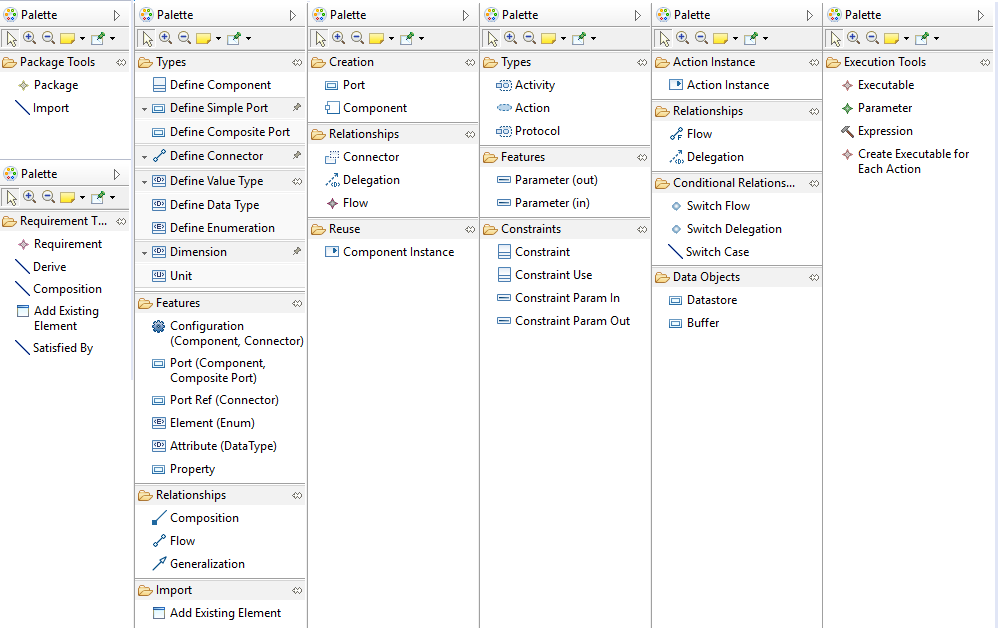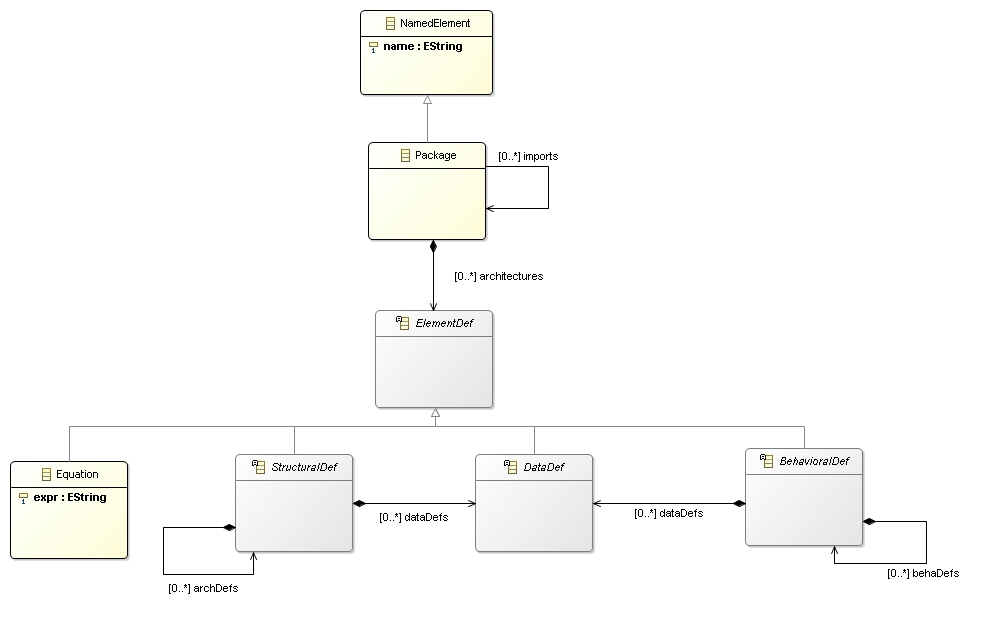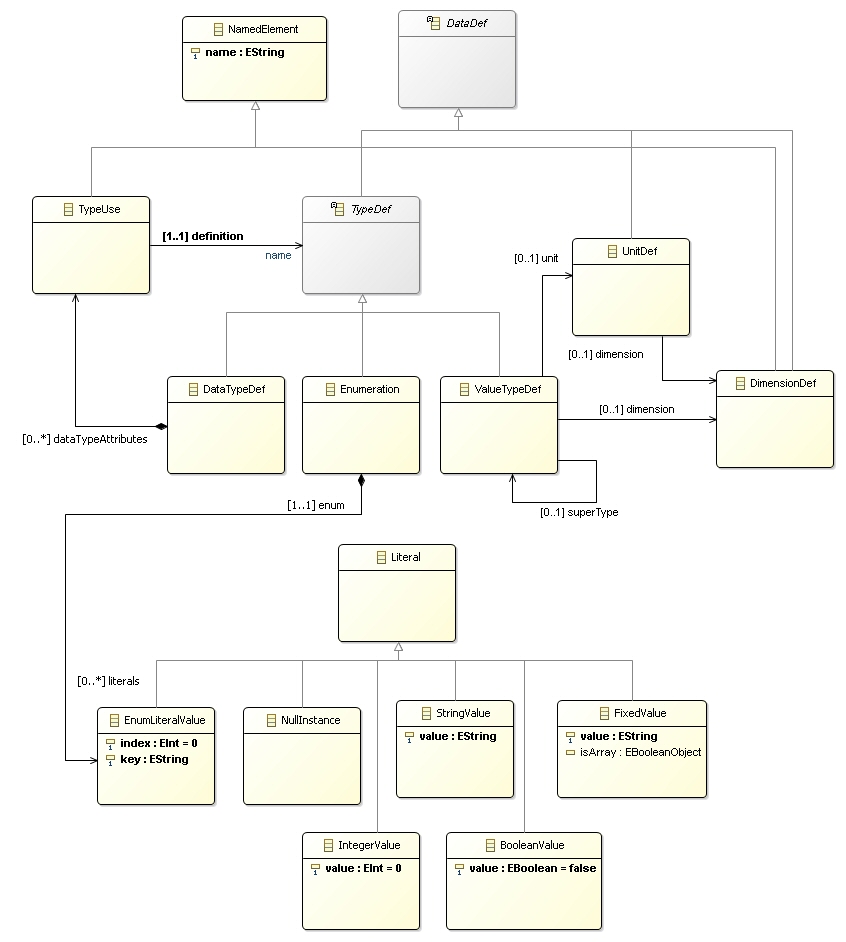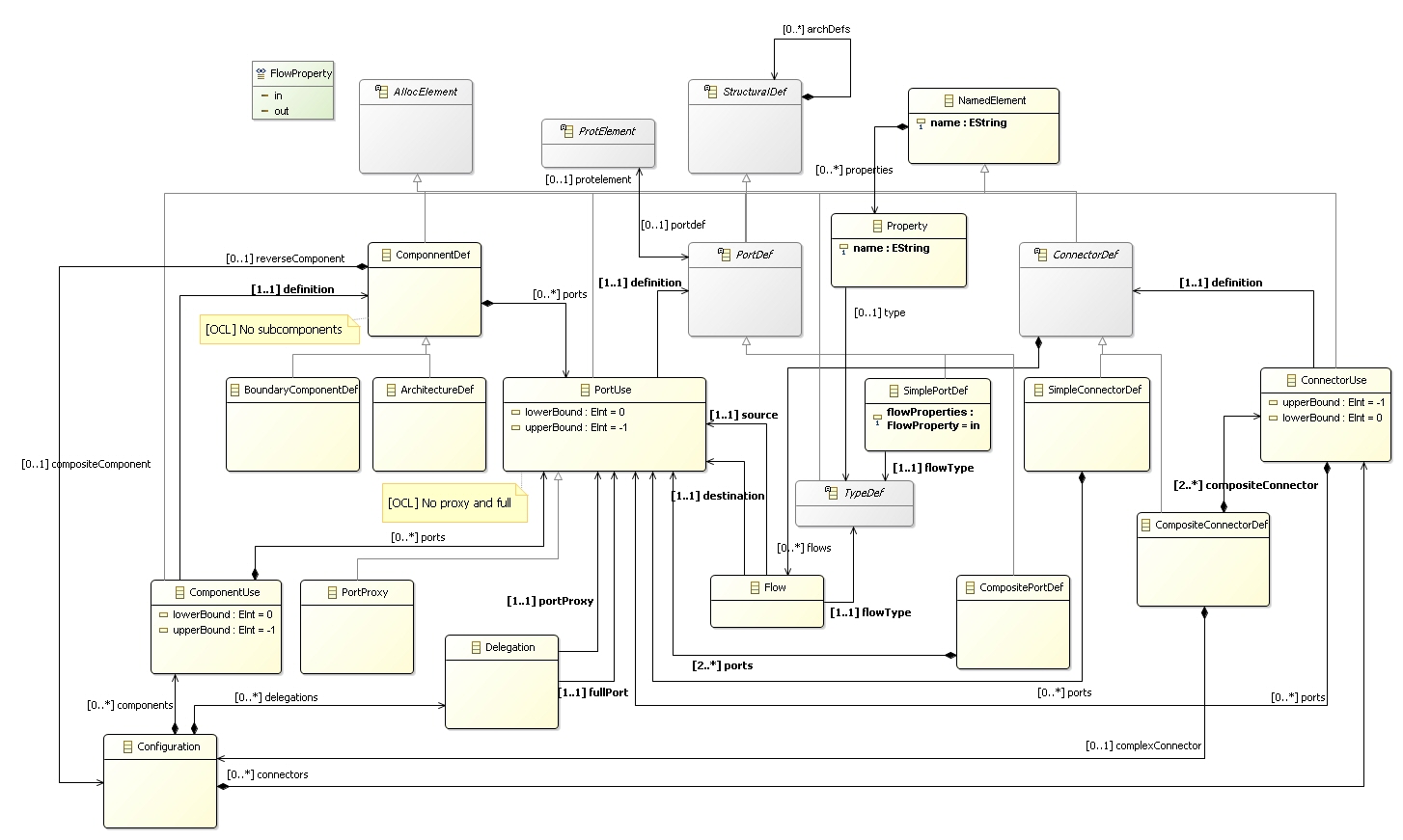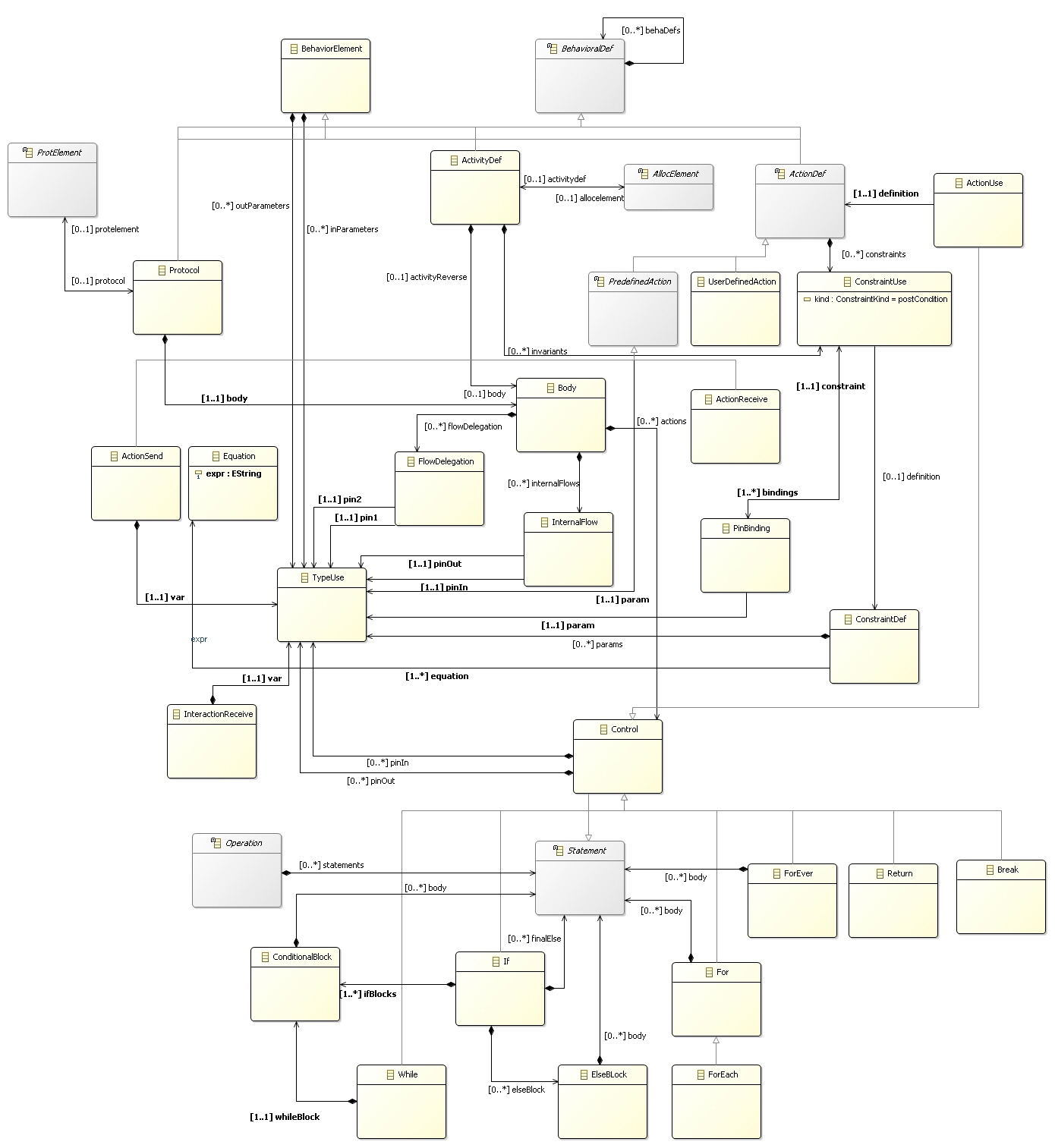Example
Room Temperature Controller System
To illustrate the use of SysADL in practice, we consider the design of a software architecture to control the temperature of a room: a Room Temperature Controller (RTC) system. The system has two temperature sensors to capture the current temperature in different areas. A user can set the desired temperature. A central controller receives the values from the temperature sensors, compares them with the desired temperature and turns the cooler or the heater on or off. The system has a presence sensor to detect if there is someone in the room. In case of presence, the system oper-ates to provide the desired temperature. Otherwise, the system operates to maintain 22 Celsius. Figure 1 shows the systems elements.
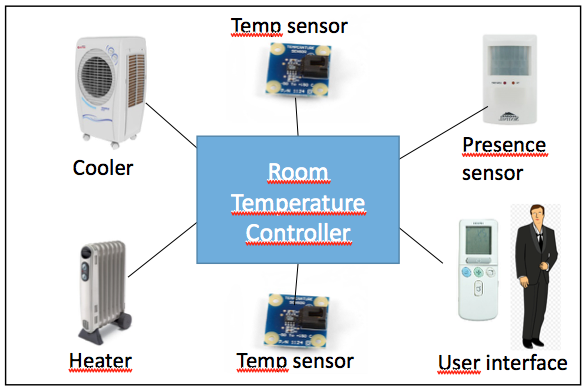
Structural View of the RTC System
In SysADL, we can describe the functional requirements using the Requirements Diagram. You can view the diagram here
Structural View of the RTC System
Components and ports definition
The Room Temperature Controller System has the following component types with their respective ports:
PresenceSensorCP is a component to detect if someone is in the room. It has an out port named detected of type PresenceOPT that provides a value indicating a presence in the room.
TemperatureSensorCP is a temperature sensor component to provide the current temperature value. It has an out port named current of type FTemperatureOPT that provides the temperature value.
HeaterCP is a component to increase room temperature and CoolerCP is a component to descrease it. They both have an in port, named controller, of type CommandIPT that receives a command to the component.
UserInterfaceCP is a component to allow the user to provide the desired temperature value. It has an out port named desired of type FTemperatureOPT that sends the temperature value.
RoomTemperatureControllerCP is a component to control the temperature by receiving temperature values and information about the presence of the user and by commanding the heater and cooler appropriately. It has the following ports: (i) two ports of type CTemperatureIPTto receive a Celsius temperature value; (ii) a port of type CTemperatureIPTto the user interface to receive the desired temperature value; (iii) a port of type PresenceIPTto receive the information about the presence of a person; and (iv) two ports of type CommandOPTto provide the commands to the heater and the cooler.
All components, ports and types of the RTCSystem are defined in block definition diagrams (bdd). Figure 2 shows the definition of the components, Figure 3 shows the definition of ports and Figure 4 shows the definition of types and dimensions of RTC System.

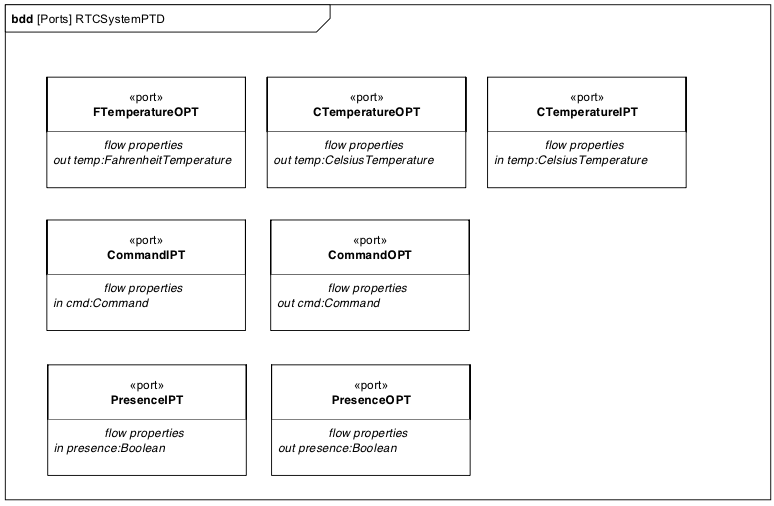
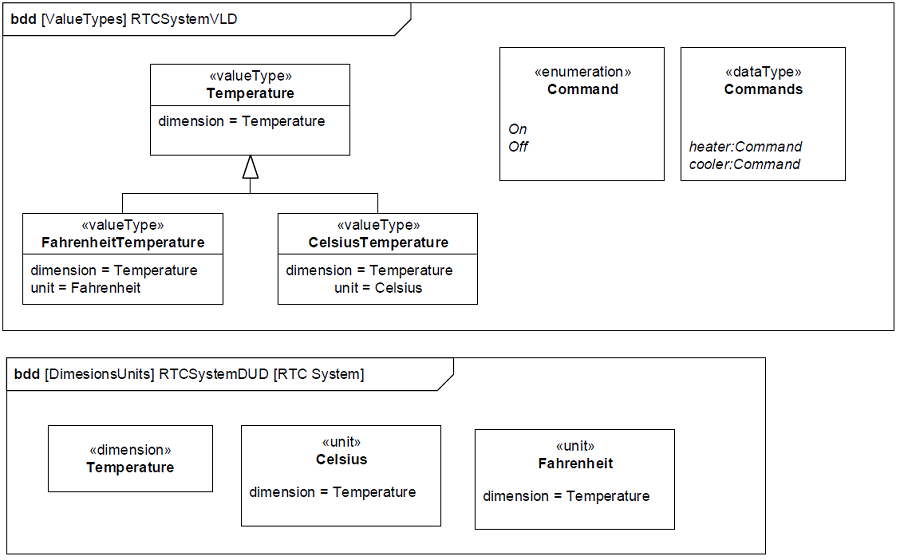
Connectors definition
There are six connector types FahrenheitToCelsiusCN, DetectPresenceCN, CTemperatureCN, and ControlCommandCN. All connector types in our example has two ports as participants and all of them were previously defined. The type of information (value type or data type) that flows in the connection were also previoulsy defined. Particularly, the FahrenheitToCelsiusCN connector type has the responsibility of converting the data type from Fahrenheit to Celsius. We describe its behavior later. Figure 5 shows the definition of the connectors.
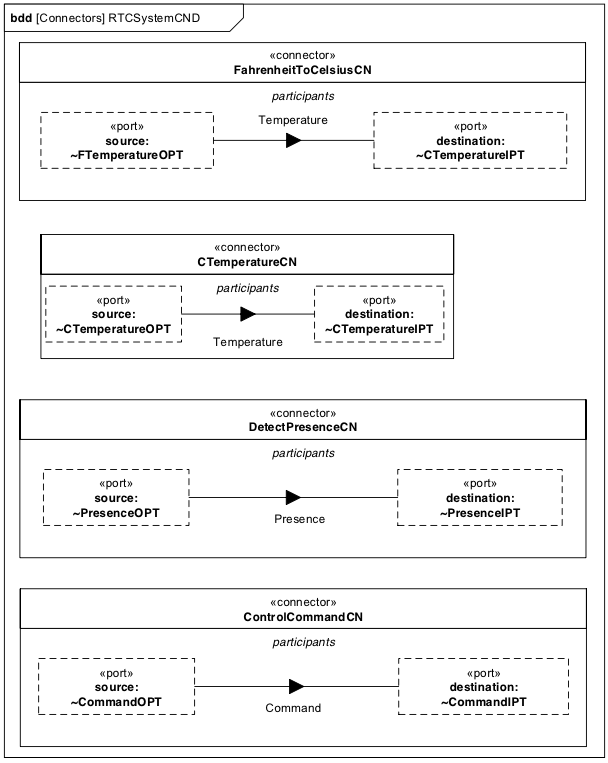
Configuration
We describe the overall architecture of the RTC System using an Internal Block Diagram to depict a configuration. The configuration uses the previous defined components and connectors and how they bind to achieve the functional requeriments. Figure 6 shows the overall architecture.
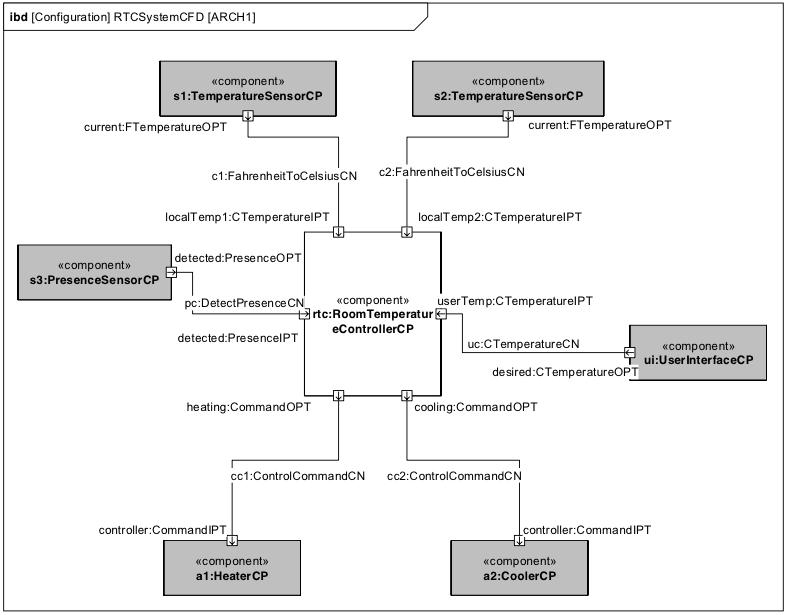
The RoomTemperatureControllerCP is a composite component and its internal structure is defined using an IBD, as in Figure 7.

Behavioral View of the RTC System
The Behavioral Viewpoint is concerned with the specification of the behavior of the elements described in the structural viewpoint. The behavioral specification includes both the definition and the use of how software architecture elements perform activities to consume and produce data. SysADL uses the activity diagram to specifies the activities and actions of components and connectors, and the protocol of the ports. The parametric diagram specifies the equations for defining the semantics of activities and actions. We define activities and actions using the BDD and use them to provide the details in the activity diagram. The equations that contraints the behavior are also defined in BDD and used in parametric diagrams to visually show how the parameters are used.
Activity definitions
The RTC system has a RoomTemperatureControlerCP composite component. Its behavior is specified by specifying the behavior of the internal components. That component has three internal components as we can see in Figure 7. In Figure 8, we show the definition of the three activities that specifies the behavior of those three components. The last FahrenheitToCelsiusAC activity that express the behavior of the FahrenheitToCelsiusCN connector that links the TemperatureSensorCP to the RoomTemperatureControllerCP. Each activity, in this example, has only one action that provides the details of the behavior.
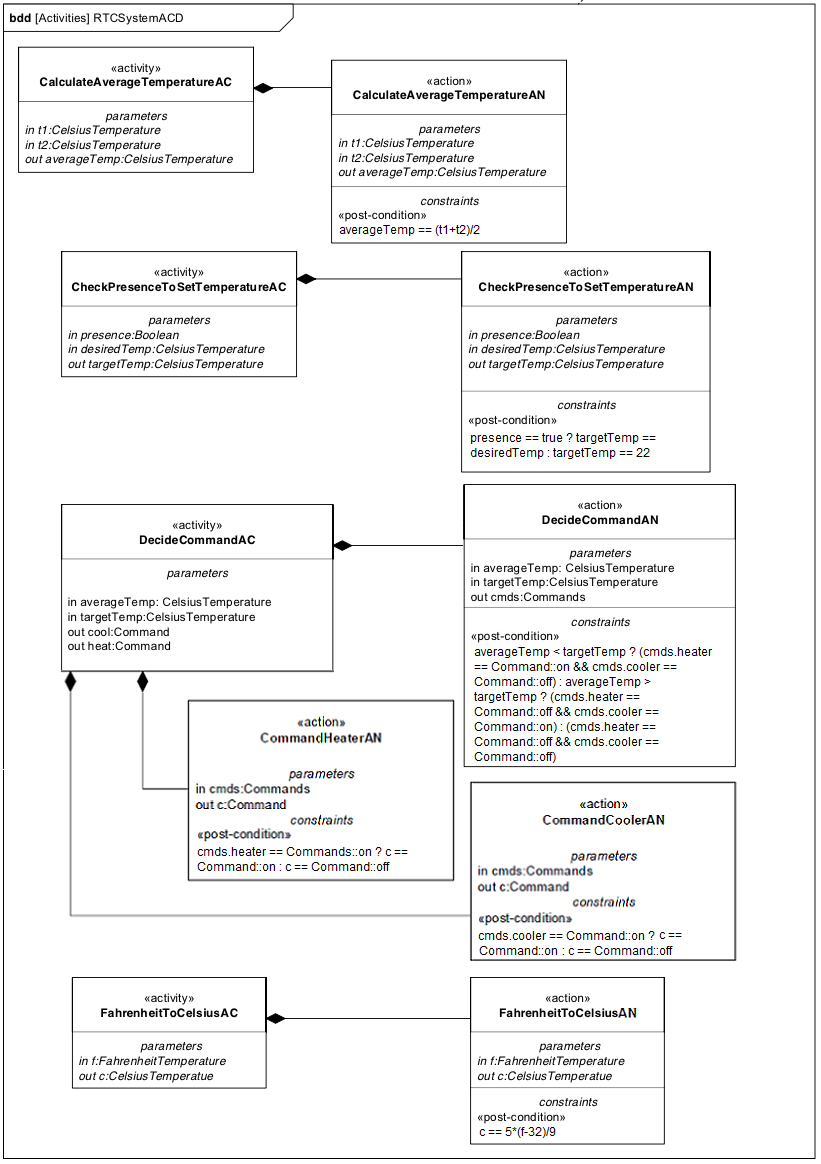
Activity diagrams
Each activity is specified in details in activity diagrams. The activity diagrams show parameters and the action that compute the data received in the input parameter and send them to the output parameter. Considering that the an activity diagram represents the behavior of a component, the parameters in the activity diagram correspond to the ports in the component.

The CheckPresenceToSetTemperatureAC component specifies the behavior of the SensorMonitorCP component. The parameters shows the type of information that flows in the corresponding ports. Figure 10 show the activity diagram.
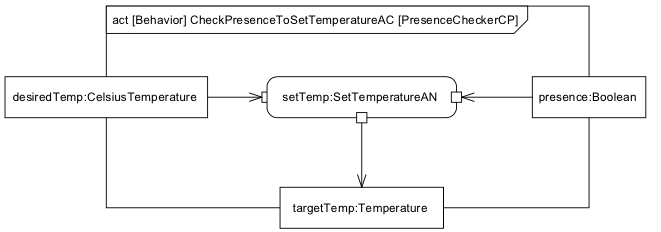
The DecideCommandAC component specifies the behavior of the CommanderCP component. The parameters shows the type of information that flows in the corresponding ports. Figure 11 show the activity diagram.
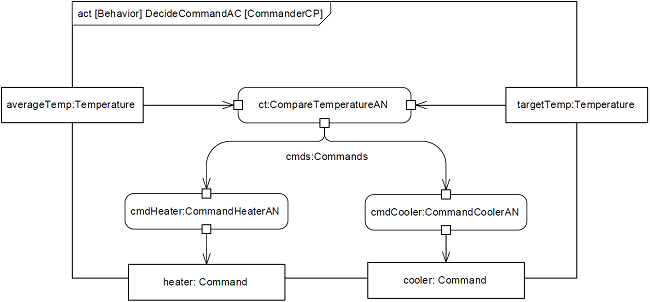
The FahrenheitToCelsiusAC component specifies the behavior of the CommanderCP component. The parameters shows the type of information that flows in the corresponding ports. Figure 12 show the activity diagram.


